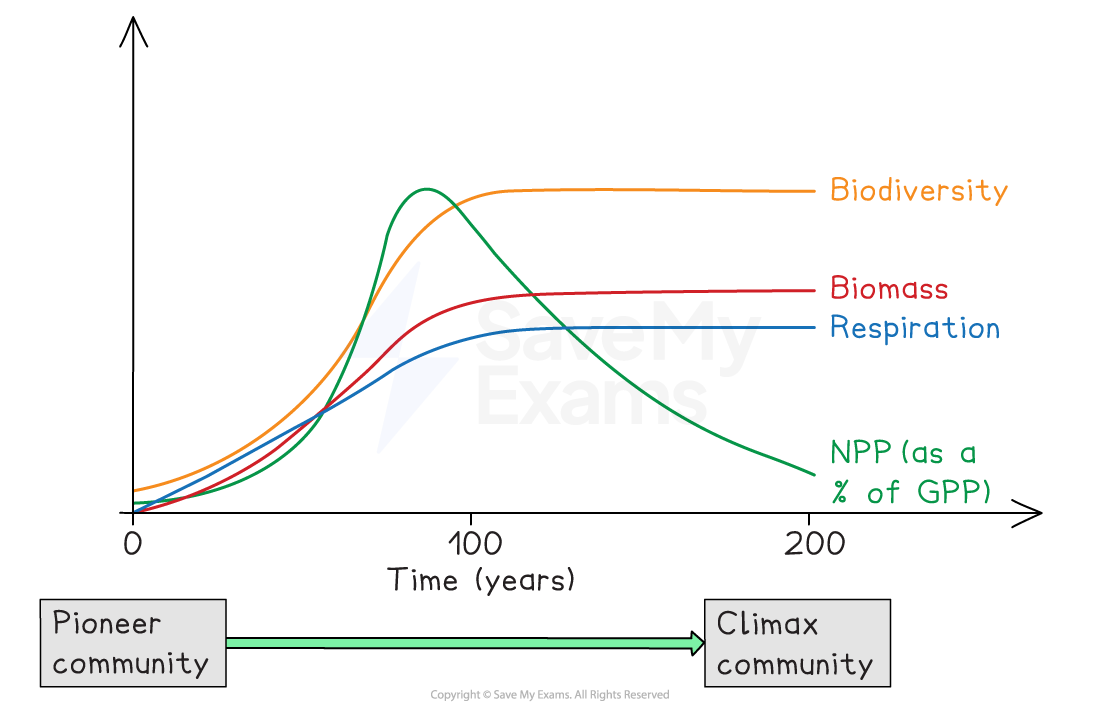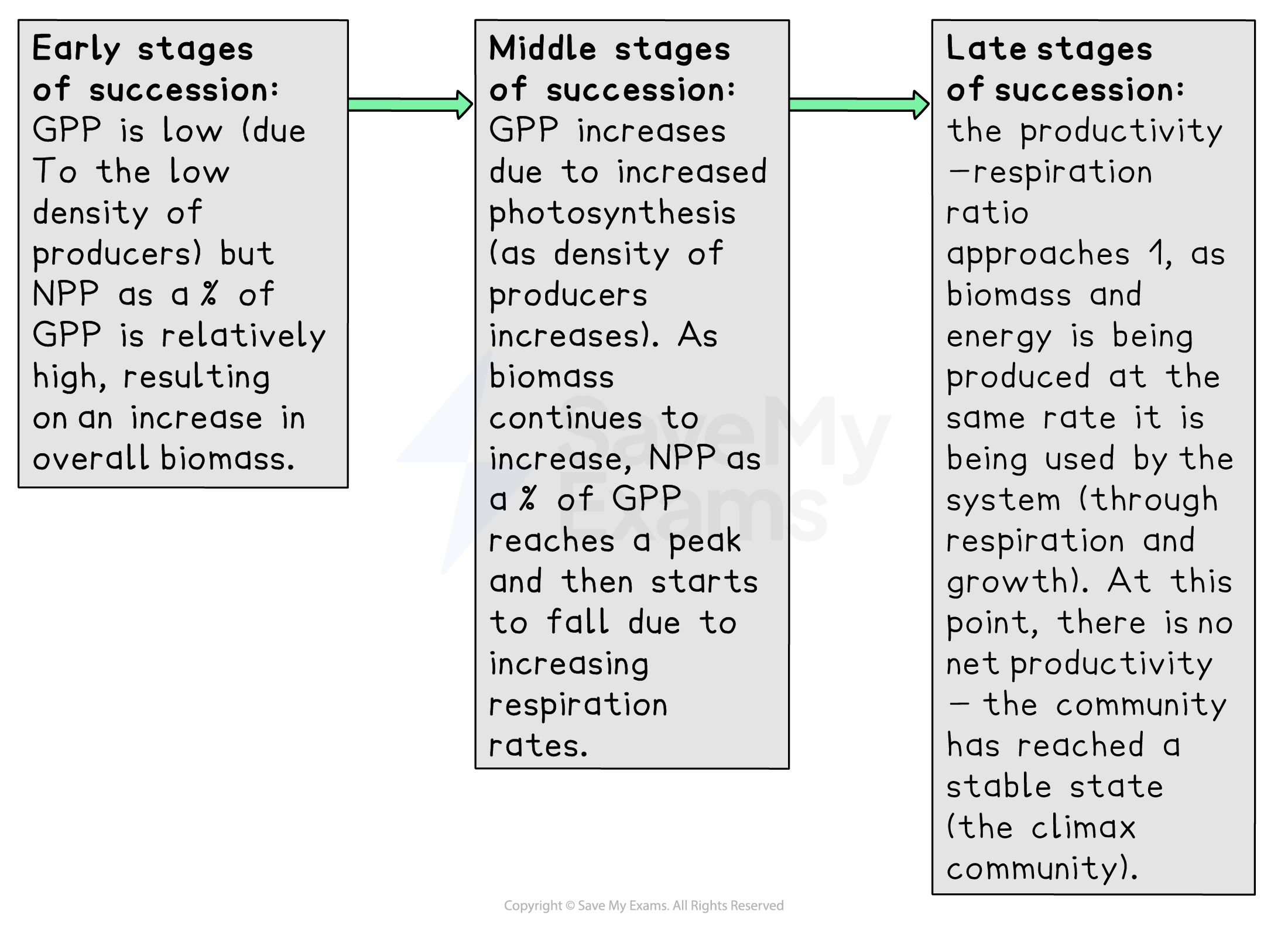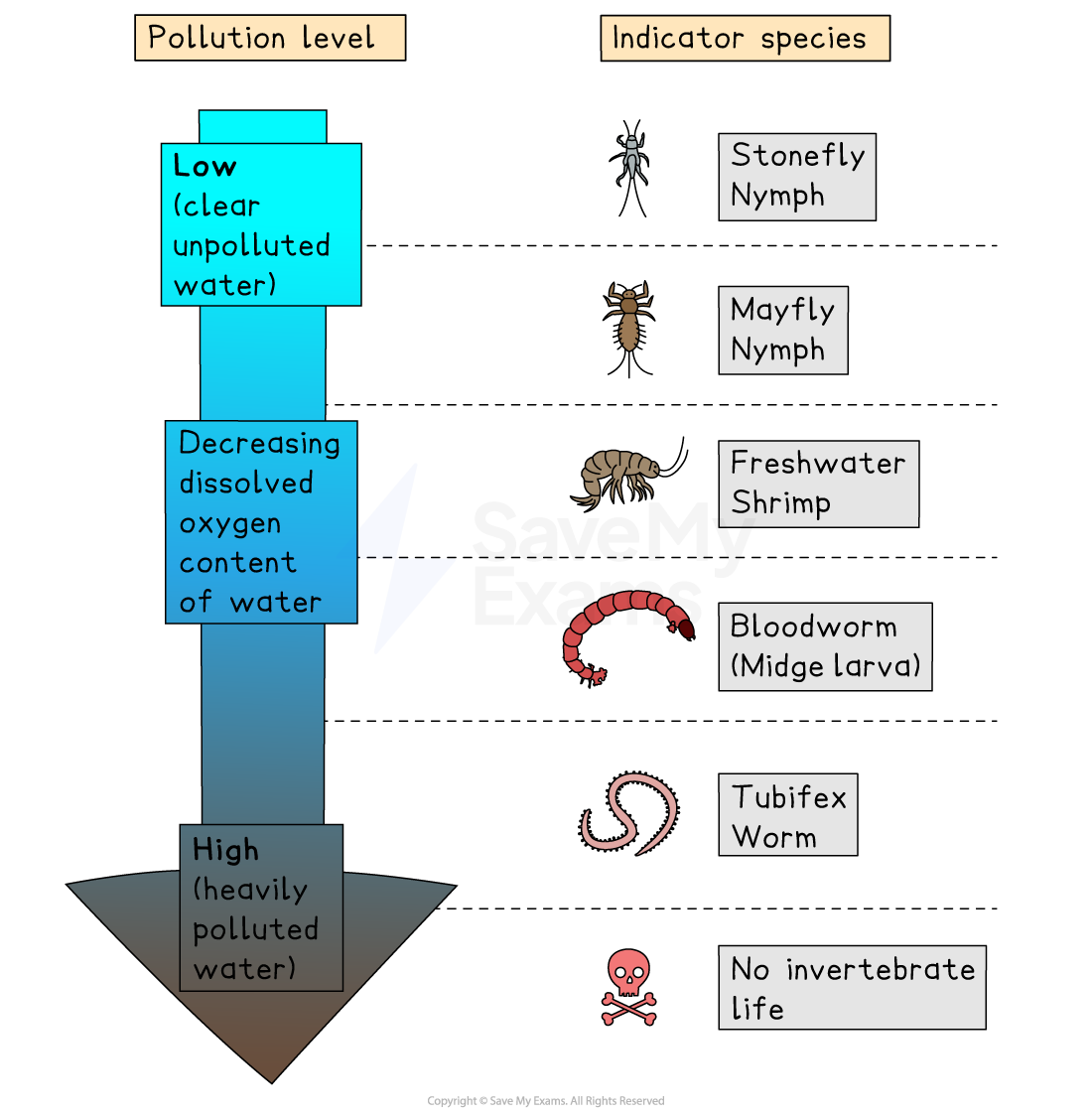Ecological Succession (College Board AP® Environmental Science): Study Guide
Primary & secondary ecological succession
Ecosystems are dynamic, meaning that they are constantly changing
Over time, ecosystems often change and develop from being very simple to being relatively complex
This process is known as succession
During succession, the biotic conditions (i.e. the living factors) and the abiotic conditions (i.e. the non-living factors) change over time
What is primary succession?
Primary succession is the process that occurs when newly formed or newly exposed land (with no species present) is gradually colonized (inhabited) by an increasing number of species
This new uninhabited land can be created in several ways
For example:
The magma from erupting volcanoes cools and often leads to the formation of new rock surfaces or even new rocky islands in the sea
Another way new land can be exposed is by sea-level dropping or the drying up of a lake, leaving areas of bare rock
When glaciers retreat, they also leave bare rock or moraines
Primary succession does not only occur on bare rock—any barren terrain that is slowly being colonized by living species is undergoing succession
For example:
Sand dunes in coastal areas
Marram grasses are the pioneer species in these environments, as they have deep roots to access water that other plants can't reach
They are also able to tolerate the salty environment, i.e. the high concentrations of sodium and calcium ions caused by sea spray
What is secondary succession?
Secondary succession is a very similar process but happens on bare soil where there has been a pre-existing community, such as:
An agricultural field that has stopped being used
A forest area after an intense forest fire
Soil is already present, allowing faster ecosystem development compared to primary succession
Effect of ecological succession on ecosystems
Pioneer species:
Early successional species move into unoccupied habitats and adapt to the conditions
Over time, these species modify the environment, making it suitable for other organisms
Formation of new species:
The gradual adaptation of organisms to new or changing environments may lead to the development of new species over time
The stages of succession
A seral community (also known as a sere) is a temporary and intermediate stage in the ecological succession of an ecosystem
Each seral community, in succession, causes changes in environmental conditions
These changes allow the next community to replace it (e.g. through competition) until a stable climax community is reached
First, seeds and spores carried by the wind land on the exposed rock and start to grow
These first species to colonise the new land (often moss and lichens) are known as pioneer species
As these pioneer species die and decompose, the dead organic matter (humus) forms basic soil
Seeds of small plants and grasses, sometimes also carried in the wind or transported other ways (e.g. in bird faeces), land on this basic soil and begin to grow (these smaller plants are adapted to survive in shallow, relatively nutrient-poor soils)
As these small plants and shrubs die and decompose, the new soil becomes deeper and more nutrient-rich
The roots of these small plants and shrubs also form a network that helps to hold the soil in place and prevent it from being washed away
Larger plants and shrubs, as well as small trees that require deeper, more nutrient-rich soil, can now begin to grow
These larger plants and small trees also require more water, which can be stored in deeper soils
Finally, the soil is sufficiently deep, contains enough nutrients and can hold enough water to support the growth of large trees
These final species to colonise the new land become the dominant species of the now relatively complex ecosystem
The final community formed, containing all the different plant and animal species that have now colonised the new land, is known as the climax community

Impacts of succession in disturbed ecosystems
Succession in disturbed ecosystems leads to
Increased biomass: more plant and animal matter accumulates as the ecosystem matures
Greater species richness: the number of species increases as the ecosystem diversifies
Higher net productivity: as more plants establish themselves, they contribute to primary productivity, supporting higher trophic levels
Productivity during succession
Productivity in ecosystems is the rate at which energy is produced and stored, measured as gross productivity (GP) and net productivity (NP)
Gross productivity is the total amount of energy captured by producers (like plants) through photosynthesis
Net productivity is the energy that remains after respiration by the producers, which is available for growth and consumption by other organisms
Early stages of succession (pioneer community)
In the early stages of succession, gross productivity is low due to:
Harsh environmental conditions (e.g. bare rock or poor soil)
Low nutrient availability (limits the growth of producers)
Low density of producers:
Pioneer species like mosses and lichens are the first to colonise these areas
There are fewer plants or algae to carry out photosynthesis
The conditions are not yet favourable for large-scale plant growth
Net productivity is relatively high and increases quickly at this stage because:
Most energy produced through photosynthesis goes toward growth and biomass accumulation
There is less cellular respiration taking place as the ecosystem has fewer organisms, especially consumers
Mid-stages of succession
As succession progresses, conditions improve:
Soil formation occurs, allowing larger plants like shrubs and trees to establish
More nutrients become available, and the number of producers increases
Gross productivity rises:
More plants are present to carry out photosynthesis
Plant diversity increases, which increases the efficiency of energy capture
Net productivity still increases but the rate of increase slows and will eventually reach a peak
The rate of biomass accumulation slows because:
Respiration increases as more organisms, including herbivores and decomposers, become part of the system
There is more competition for resources like light, water, and nutrients, slowing the growth of new biomass
Late stages of succession (climax community)
In the final stages of succession:
The ecosystem reaches a stable state with a mature community of species, e.g. large trees in a mature forest or diverse plant species in grasslands
Gross productivity may be high as the large number of producers continue to photosynthesise
However, net productivity decreases and approaches zero because:
Most of the energy produced through photosynthesis is used up by cellular respiration of both producers and consumers
Biomass no longer accumulates significantly; instead, it cycles between organisms


What is a keystone species?
Understanding the role of keystone species
Keystone species are organisms within an ecosystem that have a disproportionately large impact on the structure and function of the ecosystem relative to their abundance
In other words, even if they have a relatively low abundance, keystone species play critical roles in maintaining the health and long-term stability of ecosystems
The presence of keystone species can help regulate the population sizes of other species and maintain higher levels of biodiversity
The removal of keystone species can have cascading effects throughout the ecosystem, leading to significant changes in community structure and function
If their removal disrupts the ecological balance too much, this can increase the risk of ecosystem collapse
Examples of keystone species
African elephants (Loxodonta africana) play a vital role in shaping the structure and composition of savannah grasslands
Elephants feed on shrubs and trees, preventing them from becoming too dense and dominating the landscape
Their browsing behavior creates gaps in the vegetation, promoting the growth of grasses and increasing habitat diversity—this provides habitats for a greater variety of species, increasing species diversity
Their movement and feeding activities also contributes to soil nutrient cycling by redistributing nutrients and increasing soil fertility and plant growth
Purple sea stars (Pisaster ochraceus) play a crucial role in controlling mussel populations along the rocky shores of the North Pacific coast
Sea stars prey on mussels, preventing them from overwhelming the ecosystem
Without sea stars, mussel populations would expand rapidly and start to dominate the ecosystem, outcompeting other species for space and resources
This would displace other intertidal organisms, leading to a decline in overall species diversity

What is an indicator species?
An indicator species is a plant or animal that signals the health or quality of an ecosystem through its presence, abundance, or absence
Indicator species can reveal environmental changes, such as pollution, climate shifts, or habitat degradation
Different groups of organisms, including invertebrates, plants, and algae, can act as indicator species in polluted or unpolluted aquatic habitats
Invertebrate indicators of polluted water
Bloodworms (the aquatic larvae of midges) are commonly found in polluted waters, especially those contaminated with organic matter
Their presence indicates low dissolved oxygen levels and high organic pollution
Tubifex worms also thrive in polluted waters with high organic content and low oxygen levels
Invertebrate indicators of unpolluted water
Stonefly nymphs are sensitive to water pollution and are often found in well-oxygenated, clean streams and rivers
Their presence indicates good water quality
Mayfly nymphs are also highly sensitive to pollution and require clean, well-oxygenated water


Unlock more, it's free!
Did this page help you?